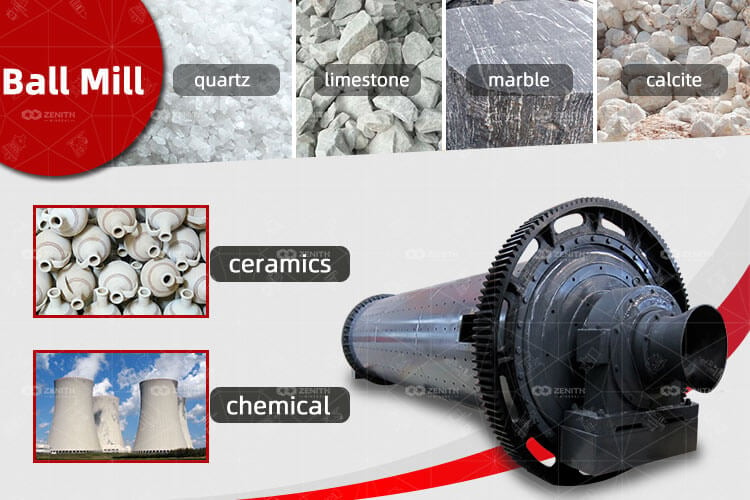Quartz, a widely abundant mineral known for its hardness and durability, has found extensive use in various industries. One crucial aspect of harnessing its potential lies in the process of grinding quartz into fine particles. Quartz grinding mills play a pivotal role in this process, offering efficient and precise grinding solutions that enable the extraction of valuable quartz particles for diverse applications.
This article delves into the world of quartz grinding mill, exploring their key features, and applications across industries.
Quartz grinding involves reducing the size of quartz particles to desirable specifications. The process typically involves the use of grinding mills, which utilize mechanical forces to break down the quartz into finer particles. These mills employ various mechanisms such as impact, attrition, and compression to achieve the desired particle size distribution.
A quartz grinding processing plant serves as a centralized facility dedicated to refining quartz particles into finely ground materials. The establishment of such a plant is significant for multiple reasons:
Quartz grinding mills serve as indispensable equipment in the processing of quartz, enabling the extraction of valuable particles for various industries.
The commonly used quartz grinding machines include ball mill, Raymond mill, and vertical roller mill.
Quartz ball mill is a type of grinding equipment used to grind quartz crystals and other similar materials into fine powder. It consists of a horizontal cylinder with a rotating drum, which is partially filled with grinding media such as ceramic balls or steel balls. As the drum rotates, the grinding media cascade and impact the quartz particles, reducing them in size. The ground material is then discharged through a grate at the end of the mill. Quartz ball mills are widely used in the quartz industry for grinding and pulverizing quartz materials.

Quartz vertical mill, also known as a vertical roller mill, is a type of grinding mill that utilizes the principle of vertical grinding discs. The quartz material is fed into the mill through a central inlet and is ground between the rotating grinding discs. The grinding discs exert high pressure on the material, crushing and grinding it into fine powder. The ground material is then collected in a separator and discharged through the bottom of the mill. Quartz vertical mills are known for their high grinding efficiency and ability to handle large quantities of quartz material.
Quartz Raymond mill, also known as a Raymond roller mill, is a type of grinding mill that uses Raymond mill technology. It utilizes a combination of compression and rotational forces to crush and grind the quartz material. The quartz is fed into the mill from the side and is crushed between the grinding roller and the grinding ring. The crushed material is then carried by the airflow and classified by the classifier. The fine powder is collected in the cyclone separator, while the oversized particles are returned to the grinding chamber for further grinding. Quartz Raymond mills are suitable for grinding various hardness levels of quartz and provide precise control over the final particle size distribution.

In summary, quartz ball mills, quartz vertical mills, and quartz Raymond mills are all grinding equipment used for pulverizing quartz materials. Each type of mill has its own advantages and is suitable for different applications. The choice of mill depends on factors such as the desired particle size, production capacity, and specific requirements of the application.
Quartz grinding processing is a fundamental step in unlocking the potential of this versatile mineral. Through grinding mills, quartz particles are broken down into fine powder, enabling their utilization in industries such as glass, ceramics, electronics, and construction. The advancements in grinding technologies have revolutionized the process, offering efficient and precise grinding solutions. As industries continue to explore the potential of quartz, the continuous development of quartz grinding processing holds promise for enhanced productivity, innovation, and sustainable development across various sectors.

Strategic integration of advanced quarrying, grinding, classification and finishing technologies enables consistent, high-purity quartz powder manufacture essential for industries worldwide. Ongoing innovations promise lower operational and capital costs with lower environmental footprints.
With their efficient grinding mechanisms, precision control, and versatility, these mills offer a reliable and effective solution for achieving the desired particle size distribution. As industries continue to harness the potential of quartz, the advancements in quartz grinding mills pave the way for enhanced productivity, innovation, and sustainable development in diverse sectors.

From the perspective of development process, silica sand is widely used in glass, casting, ceramics and refractory materials, metallurgy, construction, chemical industry, plastics, rubber, abrasives and other industries.

dolomite processing plant can be divided into dolomite crushing and sand making plant and dolomite grinding plant.

If you want to know about the profit, you must first understand the cost composition in the silica sand washing plant.
Fill your requirements here, and we'll send the custmized solution and quotation to you by the reserved contact information.